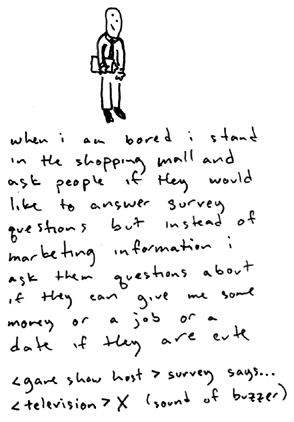It’s one of the major moral dilemmas of creative work: do
you go with the data, or go with your gut?
According to cliché, those who favor the former will go
on to successful careers, sleep on a soft bed of $100 bills, and suffer from an
incurable feeling of moral emptiness. The latter will experience artistic
satisfaction, until they eventually die from a combination of starvation and
heartbreak over feeling unappreciated.
But if you’re eager to say, “Sounds good to me... Just
give me the money!” you might be interested in my recent epiphany about
successful creative work: opportunistic creations rarely survive. When things
are intended to be popular, they rarely are. At least, not for very long.
As comedian Bill Burr recently observed, “When was the
last time you bought a box set of a reality show? I don’t think they exist.
That’s why they’re, like, disposable. That’s like the Bic lighter of fucking
television shows.”
If you just look at the data, Real Housewives of
Such-and-Such is pretty popular right now, but just doesn’t stick in people’s
minds quite like Seinfeld.
This is why, if done the right way, sincerity and
creativity aren’t just more satisfying than hackery. They make more money. A
lot more, in fact.
As marketers, we are supposed to be the creative side of
business. We’re expected to find the heart and soul of a product, and then
express it to the public in a way that makes them connect with it. But are we losing
our creativity? Replacing it with stats and marketing data that makes us sound
smart. (“Males in our demo like cars! What the hell, can’t we get a cool car in
this picture!?!?”)
 |
| www.toothpastefordinner.com |
Today’s big data can help you customize your marketing
content specifically for males age 39-47 who are interested in ice fishing.
But… IS YOUR CONTENT ANY GOOD?
Here’s my personal philosophy toward data. Know it. Learn
every fact and statistic you can comfortably cram into your brain. Then… don’t
use any of it. Take a step back. Don’t think about the little details for a
moment. Relax, enjoy a cup of coffee. And then, maybe you’ll start to see the
thing that you missed while you were focused on the finer details: the story.
The one Big Idea behind it all.
Here’s an example. Ironically, New Think Creative is
tasked with promoting Big Data itself. One of our clients is an enormous
aggregator of consumer information. We know lots of impressive data about our
data giant. The millions of consumers they’ve collected information on! Their
many terabytes of data storage!
But then, how many terabytes is a lot? Five terabytes? Five
billion terabytes? Do you even care?
They have a story that’s even bigger than their data, and
it’s something we call Smart Data. You see, this company doesn’t just collect
information. They analyze the data and use it to make predictions (i.e., will a
customer pay you back if you lend him money?). Anyone can find data. They know the data. That’s their story, their
identity.
And if you know any businesses that are looking to
express their identity, you might want to send them our way. We’re sure to find
something that will last longer than the next season of Real Housewives.









